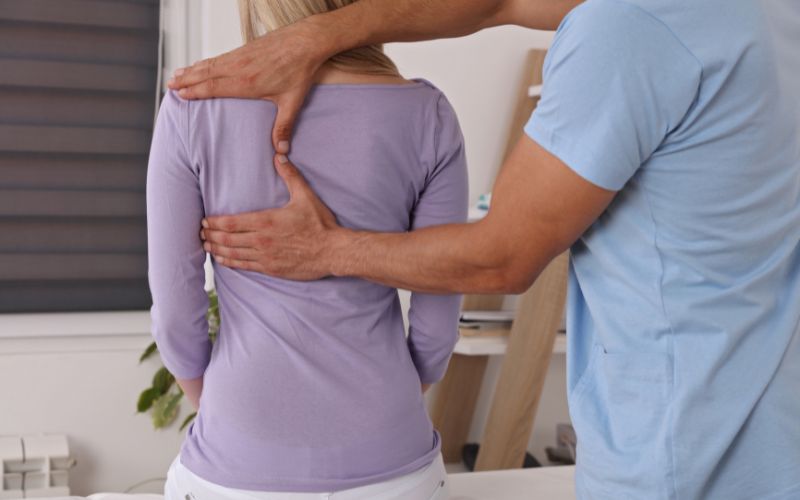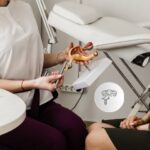Physiotherapy for Back Pain
Back pain affects almost 70% of working individuals, and senior citizens worldwide. Nowadays people becoming aware about physiotherapy are choosing this to address the root causes of back pain. In this article expert from physiotherapy center in Vikas Puri, Delhi explains its effectiveness, methodologies, and pressure points.
Back Pain
Back Pain can be from muscle strains, herniated discs, poor posture, or other factors and impact one’s life. Traditional treatment involve medicines but physiotherapy go beyond, targeting the underlying issues.
Back Pain Physiotherapy in Vikas Puri, Delhi
Physiotherapy or physical therapy, involves a range of exercises, stretches, and manual techniques aimed at improving mobility, strength, and flexibility. Physiotherapy focuses on long-term solutions by enhancing the body’s natural healing mechanisms.
A qualified physiotherapist begins by identifying the specific factors causing back pain. This assessment include a detailed medical history, a physical examination, and sometimes imaging studies like X-rays or MRI scans. Once the root cause is iidentified, the physiotherapist prepare combination of exercises, stretches, and manual therapies to address the pain.
Physiotherapy exercises target the core muscles, such as the transverse abdominis and multifidus. Strengthening these muscles to provide stability to the spine, reducing the risk of strain and injury.
Restricted mobility and stiffness are common and can cause back pain. Physiotherapists prescribe specific exercises to improve flexibility and enhance the range of motion in the spine and surrounding muscles. This may include stretches for the hamstrings, hip flexors, and spinal extensors.
Pressure Points and Exercises for Back Pain
- Acupressure Point: Lower Back (Lumbar Region): Locate the acupressure point just above the hip bone and apply gentle pressure. Use circular motions with your fingers, gradually increasing the pressure for about 1-2 minutes. This point stimulate blood flow and release tension in the lower back.
- Trigger Point: Upper Trapezius: Find the trigger point at the top of your shoulders, between the neck and the edge of your shoulder. Apply firm pressure using your fingertips or a massage ball. Gently massage or hold the pressure for 1-2 minutes to release tension associated with upper back pain.
- Shiatsu Point: Governing Vessel 20 (GV20): Located at the top of the head, GV20 is considered a stress-relief point. Apply gentle pressure using your thumbs, moving in a circular motion. This point is believed to promote relaxation and alleviate stress-related back pain.
Exercises for Back Pain Relief:
- Cat-Cow Stretch: Start on your hands and knees, with wrists directly under shoulders and knees under hips.Inhale, arch your back, and lift your head and tailbone towards the ceiling (Cow position).Exhale, round your back, and tuck your chin to your chest (Cat position).Repeat for 10-15 repetitions to improve flexibility and mobility in the spine.
- Child’s Pose: Kneel on the floor with toes touching and knees spread apart. Lower your torso between your knees, reaching your arms forward. Hold the stretch for 30 seconds, focusing on relaxing the lower back and promoting spine flexibility.
- Pelvic Tilts: Lie on your back with knees bent and feet flat on the floor.Tighten your abdominal muscles and tilt your pelvis upward, flattening your lower back against the floor. Hold for a few seconds, then release. Repeat 10-15 times to strengthen the core and stabilize the spine.
- Bridge Exercise: Lie on your back with knees bent and feet hip-width apart.Lift your hips towards the ceiling, creating a straight line from shoulders to knees.Hold for a few seconds, then lower back down. Repeat for 12-15 repetitions to strengthen the lower back and glutes.
- Seated Spinal Twist: Sit with legs extended in front of you.Cross one leg over the other and place the opposite elbow on the outside of the bent knee.Twist your torso gently, holding the stretch for 20-30 seconds on each side to improve spinal mobility.
Integration of Pressure Points and Exercises for Back Pain:
- Warm-up with Pressure Points: Before starting exercises, spend a few minutes applying pressure to targeted points to enhance blood circulation and prepare muscles for stretching and movement.
- Incorporate Pressure Points During Exercises: While performing stretches or exercises, periodically apply pressure to specific points for added relaxation and tension release.
- Cool Down with Pressure Points: Finish your routine by focusing on pressure points associated with relaxation to promote a sense of calm and reduce any residual tension.
Physiotherapy focus on addressing the root causes of backpain set it apart from conventional interventions. By combining therapeutic exercises, manual techniques, physiotherapy provides relief and equips individuals to lead healthier, pain-free lives. You can visit the Physiotherapy center in Vikas Puri at UK Nursing Home, Delhi













